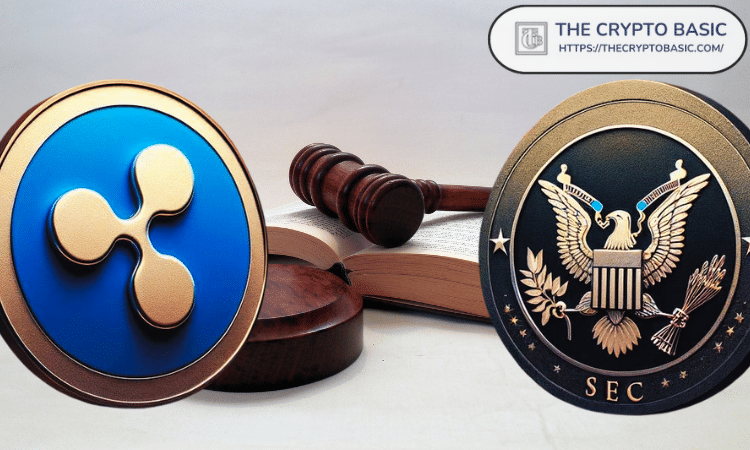- Consumer Price Index in the US is forecast to rise 3.3% YoY in July, up from the 3% increase recorded in June.
- Core CPI inflation is expected to hold steady at 4.8% YoY in July.
- US CPI inflation report could significantly impact the US Dollar’s valuation by altering the Fed’s rate outlook.
The highly-anticipated Consumer Price Index (CPI) inflation data for July will be published by the US Bureau of Labor Statistics (BLS) on Thursday, August 10, at 12:30 GMT.
The US Dollar (USD) has been gathering strength against its rivals since mid-July, with macroeconomic data releases highlighting the relatively upbeat performance of the US economy and tight labor market conditions. Following the July policy meeting, Federal Reserve (Fed) Chairman Jerome Powell refrained from committing to one more rate hike before the end of the year but investors are yet to decide whether the Fed has already reached the terminal rate.
The US CPI inflation data could alter the way markets price the Fed’s rate outlook and significantly influence the USD’s valuation. Investors will pay close attention to the details of the report to see if there is progress in the sticky parts of inflation.
What to expect in the next CPI data report?
The US Consumer Price Index data, on a yearly basis, is expected rise 3.3% in July, at a modestly stronger pace than the 3% increase recorded in June. The Core CPI figure, which excludes volatile food and energy prices, is forecast to remain unchanged at 4.8% in the same period.
The monthly CPI and the Core CPI are both seen rising 0.2% in July. Because annual CPI readings are subject to base effects, markets are likely to react to changes in monthly figures.
In July, the Prices Paid Index – the inflation component – of the ISM Manufacturing PMI edged higher to 42.6 from 41.8 in July, showing that input prices declined at a softer pace than in June. More importantly, the Prices Paid Index of the ISM Services PMI survey rose to its highest level since April at 56.8, unveiling an acceleration in the service sector’s input inflation.
Speaking on the policy outlook, Fed Governor Michelle Bowman said that additional rate increases will likely be needed if data show that progress on inflation has stalled. Meanwhile, “we are making progress against inflation. It has been slow progress, and I am watchful of any reemerging price pressures,” said Philadelphia Fed President Patrick Harker and added: “We remain unwavering in our commitment to bring inflation back to target.”
Analysts at TD Securities provide a brief preview of the key macro data and explain:
“Our forecasts for the CPI report suggest core price inflation likely stayed subdued in July: We expect it to print 0.2% m/m — a June repeat. We also look for a 0.2% gain for the headline. Importantly, we expect the report to show that core goods prices shifted more decidedly into deflation, while shelter-price gains accelerated modestly. Note that our unrounded core CPI inflation forecast is 0.23%, so we judge the risk of a 0.3% m/m advance to be larger than that of 0.1%.”
When will the Consumer Price Index report be released and how could it affect EUR/USD?
The Consumer Price Index (CPI) inflation data for July will be published at 12:30 GMT on August 10. The US Dollar started the week on a bullish note. The US Dollar Index, which gauges the USD’s valuation against a basket of six major currencies, is up nearly 1% in August after posting losses in June and July. According to the CME Group FedWatch Tool, markets are currently pricing in a more than 20% probability of the Fed opting for one more rate increase in 2023. The market positioning suggests that the USD faces significant upside risk in case inflation readings come in hotter than expected. On the flip side, the USD could weaken on a downside surprise to the CPI prints but the currency’s losses could remain limited, at least in the near term, with markets already forecasting a more than 70% probability of a no change in the Fed interest rate.
Eren Sengezer, European Session Lead Analyst at FXStreet, offers a brief technical outlook for EUR/USD and explains:
“Heading into the US inflation data, the near-term technical outlook for EUR/USD fails to provide a directional clue. The pair has been fluctuating between the 20-day and the 50-day Simple Moving Averages (SMA) since late July and the Relative Strength Index (RSI) indicator on the daily chart has been moving sideways at around 50 during that period.”
Eren also outlines key technical levels to watch for:
“On the upside, 1.1060 (20-day SMA) aligns as the first resistance. A daily close above that level could open the door for an extended uptrend toward 1.1150 (static level, July 28 high) and 1.1250 (end-point of the latest uptrend).”
“Looking south, critical support is located at 1.0920 (100-day SMA). If the pair drops below that level and starts using it as resistance on a hot inflation report, additional losses toward 1.0850 (static level) and 1.0760 (200-day SMA) could be witnessed.”
Inflation FAQs
Inflation measures the rise in the price of a representative basket of goods and services. Headline inflation is usually expressed as a percentage change on a month-on-month (MoM) and year-on-year (YoY) basis. Core inflation excludes more volatile elements such as food and fuel which can fluctuate because of geopolitical and seasonal factors. Core inflation is the figure economists focus on and is the level targeted by central banks, which are mandated to keep inflation at a manageable level, usually around 2%.
The Consumer Price Index (CPI) measures the change in prices of a basket of goods and services over a period of time. It is usually expressed as a percentage change on a month-on-month (MoM) and year-on-year (YoY) basis. Core CPI is the figure targeted by central banks as it excludes volatile food and fuel inputs. When Core CPI rises above 2% it usually results in higher interest rates and vice versa when it falls below 2%. Since higher interest rates are positive for a currency, higher inflation usually results in a stronger currency. The opposite is true when inflation falls.
Although it may seem counter-intuitive, high inflation in a country pushes up the value of its currency and vice versa for lower inflation. This is because the central bank will normally raise interest rates to combat the higher inflation, which attract more global capital inflows from investors looking for a lucrative place to park their money.
Formerly, Gold was the asset investors turned to in times of high inflation because it preserved its value, and whilst investors will often still buy Gold for its safe-haven properties in times of extreme market turmoil, this is not the case most of the time. This is because when inflation is high, central banks will put up interest rates to combat it.
Higher interest rates are negative for Gold because they increase the opportunity-cost of holding Gold vis-a-vis an interest-bearing asset or placing the money in a cash deposit account. On the flipside, lower inflation tends to be positive for Gold as it brings interest rates down, making the bright metal a more viable investment alternative.
#Consumer #Price #Index #impact #Federal #Reserve #monetary #policy


